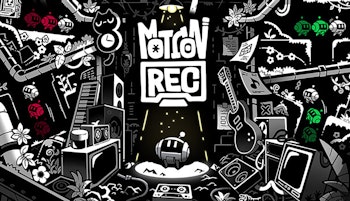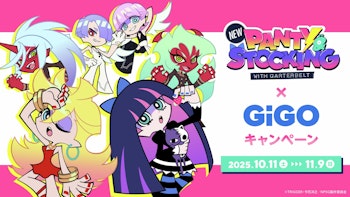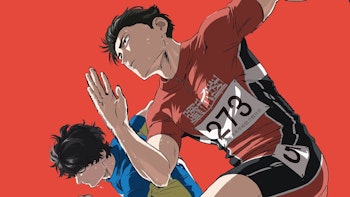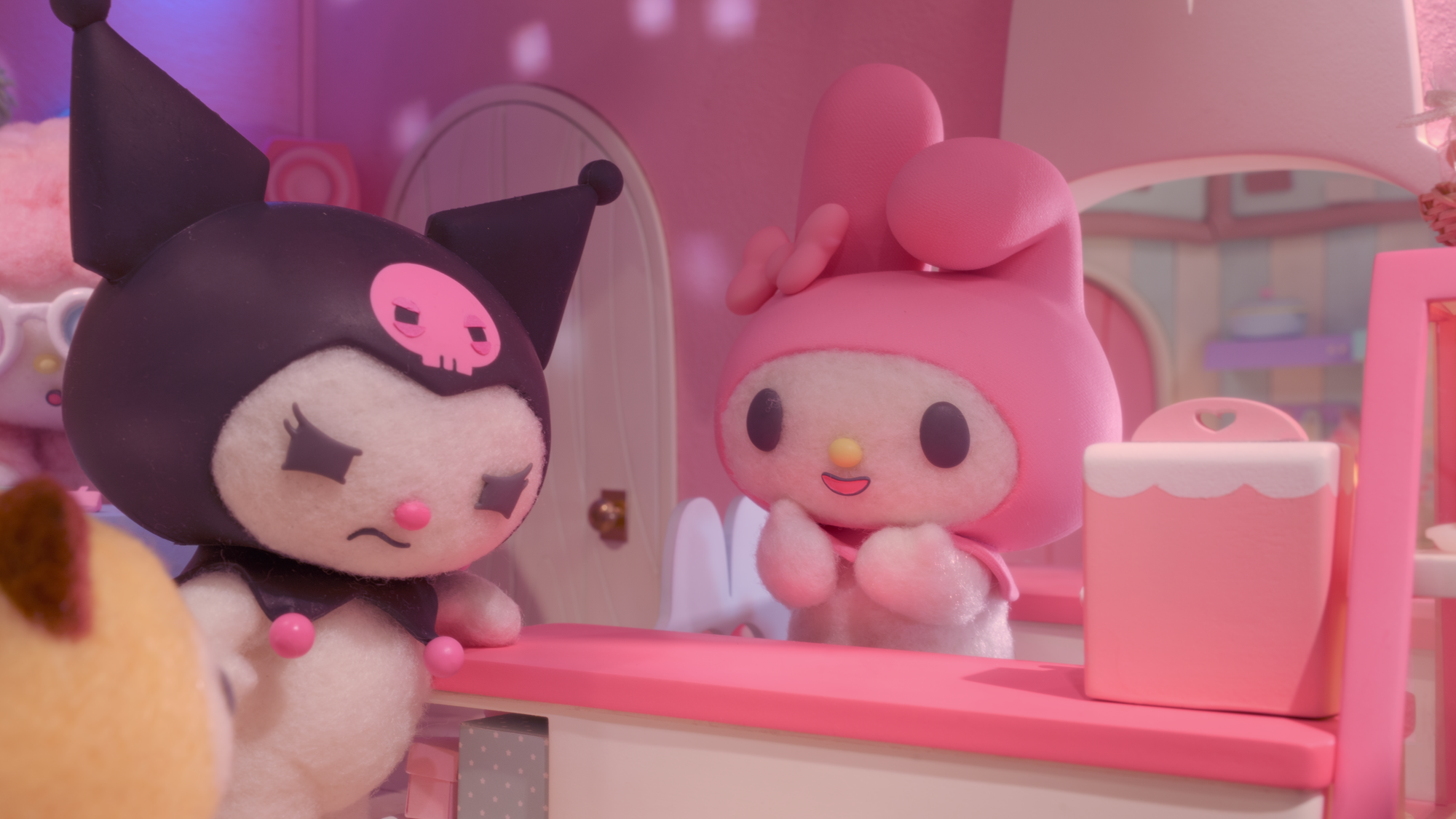
When Tomoki Misato and his team worked on a short stop-motion animated series about guniea pig cars for a segment of a morning show, I doubt he expected it to spawn a franchise and change his career. Pui Pui Molcar was a worthy viral hit, though, these cute skits charming everyone for how tangible this fluffy, carrot-fueled world felt, even as these anthropomorphized automobiles would one week get caught in traffic and another parody Indiana Jones or turn into zombies. After two seasons of Molcar, Misato would go on to found his own stop-motion-focused subdivision at WIT Studio, with Netflix’s recent My Melody and Kuromi his first work at his new studio.
The series is a mostly-low stakes affair set in the world of Mariland. My Melody’s cakes are a smash hit at her bakery, and Kuromi is not only overlooked but jealous. No one wants her Japanese sweets! So she searches for the secret to her success, but even then, any attempt to change the dynamic whether through improving her skill or sabotage falls flat. That's when elite chef Pistachio comes to town to judge a baking contest between all the stores in the land, setting in a chain of events that threatens the lives of everyone.
Beyond the Sanrio connections, just Misato’s involvement made this new animated series a highly-anticipated property. His work is defined by using real-world objects and materials to craft his stories and bring tangibility to the characters he portrays, human or otherwise. During his university days shorts like Candy.zip used sweets to create people and explore overwork, while the fluffy characters of My Little Goat were tattered by physical and other abuses in a story portraying domestic abuse through wolves, predator and prey.
While Pui Pui Molcar wasn’t quite as dark, the fluffy Molcar themselves brought the softness of the creatures to the cars and contrasted with the plastic humans to create an easy-to-understand world where animal cars were normal, and of course they have personalities and get into hijinks of their own in under 3 minutes per episode.
The series’ identity became intrinsically tied to Misato’s particular style of stop motion, to the point an attempt to continue the series without him via CG animation strips the series of the appealing bite-sized cute chaos that made it so engrossing. In short, the particular cuteness and relatability to pets and plushies in Molcar’s initial incarnations were a natural evolution on the darker thematic implementations of his school and short film stop-motion works within a more light-hearted setting, activating the imagination of fans like toys in a toy box.
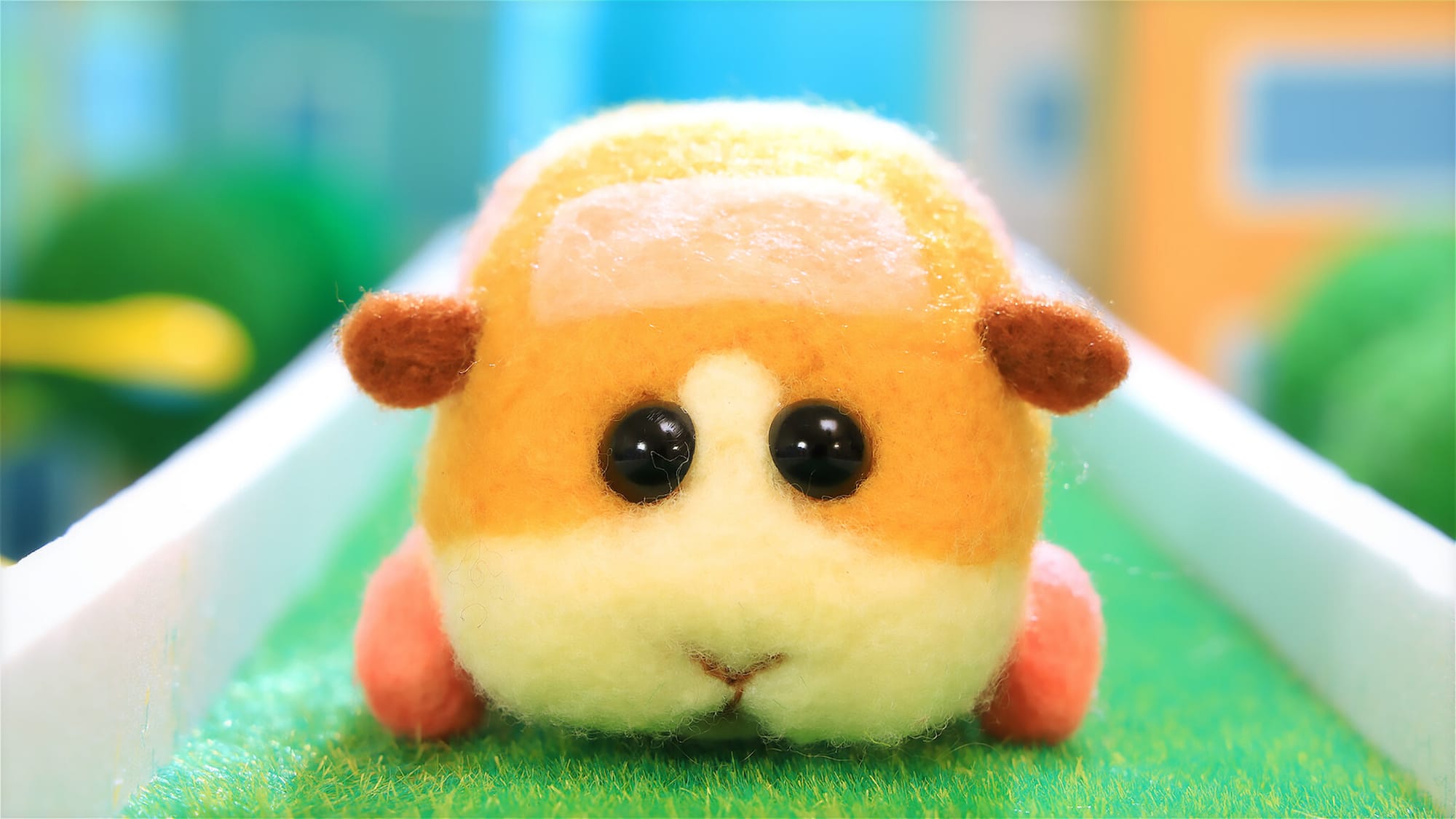
Anyone could fall in love with them because they were both adorable yet more physical, and malleable (in animated form quite literally) to new adventures that the welcoming nature of these creatures would appeal to anyone. Imagine if you did that with an actual plushie that has an established personality, is seen as a symbol of identity in fashion and for people young and old, and has been beloved for decades while being instantly recognizable?
So, barely more than 30 years old, Misato was put in charge of his own animation story, crafting a new TV series based on some of the most beloved characters in Japan. This is also far more than a retread of the ground of his previous work with a Sanrio-themed coat of paint. Episodes are extended from three minutes to just over 10 minutes, with all 12 episodes of this season combining to tell an overarching story, rather than serving as a mere self-contained comedic vehicle. There’s also dialogue - the Molcar were silent, and Misato’s work in general has avoided heavy dialogue in favor of expressive character animation.

The result is something in tone with familiar faces while creating something fresh and exciting. The series plays on the rival-cum-friendship dynamic of the pair by placing the two as owners of rival cake shops to great effect, often sickly sweet while portraying My Melody without overlooking Kuromi’s penchant for chaos. They compliment each other well whether as rivals or, later in the series, slow allies as they come to understand one another.
It’s the animation that’s the real star, the expressive signature of Misato’s prior works being elevated here to bring these clashing personalities to life. My Melody has a naive outlook on the world beyond her cooking, a joy that can’t be clouded even if that comes at the point of overlooking the things that should be taken seriously. This comes alive in the excess of pastel pinks and her preppy bounce, a glow practically radiating from every interaction. She even looks a little bit softer than the punky aesthetics and life of Kuromi, who often is far more dynamic in her movement as she drifts on her bike delivering dorayaki or rocks out while cooking.
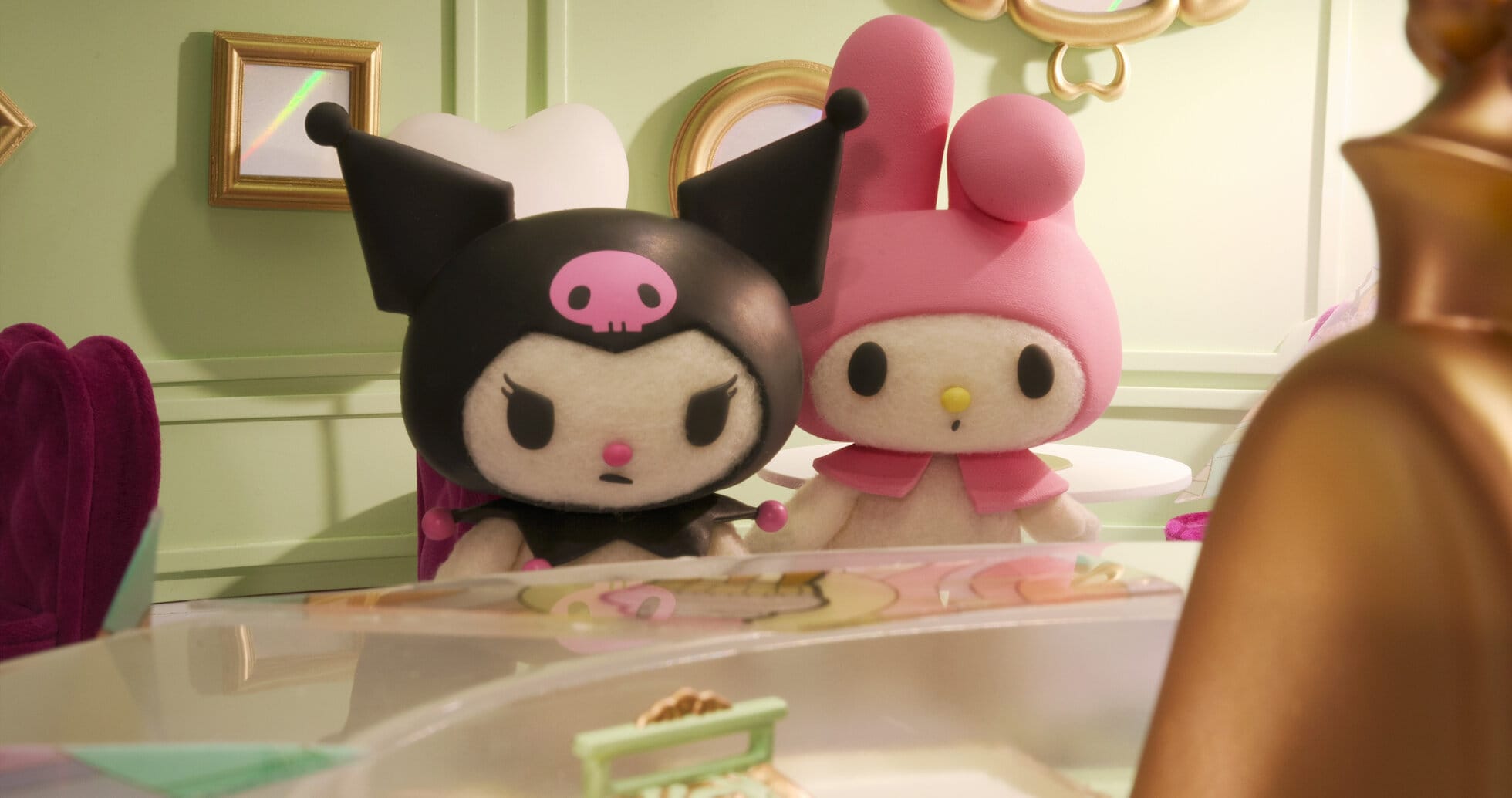
While the toys in real life go some way to portraying these elements, and many audience viewers will already be familiar with both My Melody and Kuromi, the effect of this is that the series can communicate instantly how each of the duo acts and reacts without spending time fleshing them out, important with shorter episodes where plot is a more pressing factor. It gives the series the time to have fun, which it embraces. The series squashes and stretches its world to the limits of its medium, a particular sequence in episode 3 where Kuromi seeks to steal My Melody’s secret recipe seeing them, alongside her wolf partners-in-crime, turned into cupcakes as she sneaks into her room that’s simply a joy to witness for the sheer craft and artistry of animation.
The blend of materials is distinct enough that even minor elements are noticeable and give character. Just to speak on the characters as well even if this methodology spreads throughout every scene, My Melody and Kuromi are visibly felt-like and fluffy, with more clay-like head pieces contrasted to paper cut-out mouthes and more button-like eyes. Their similarities make their differences stand out more beyond mere color while the material differences allows the signature head pieces core to their long-standing identity to be the most prominent, all while keeping them expressive. It’s not only clear and allows for the animation to say so much with so little while leaning itself to well-timed comedic bits, it’s confident, and shows an ease with the materials that leaves everything so polished, even as its dynamic camera and fluidity makes it all look so simple.
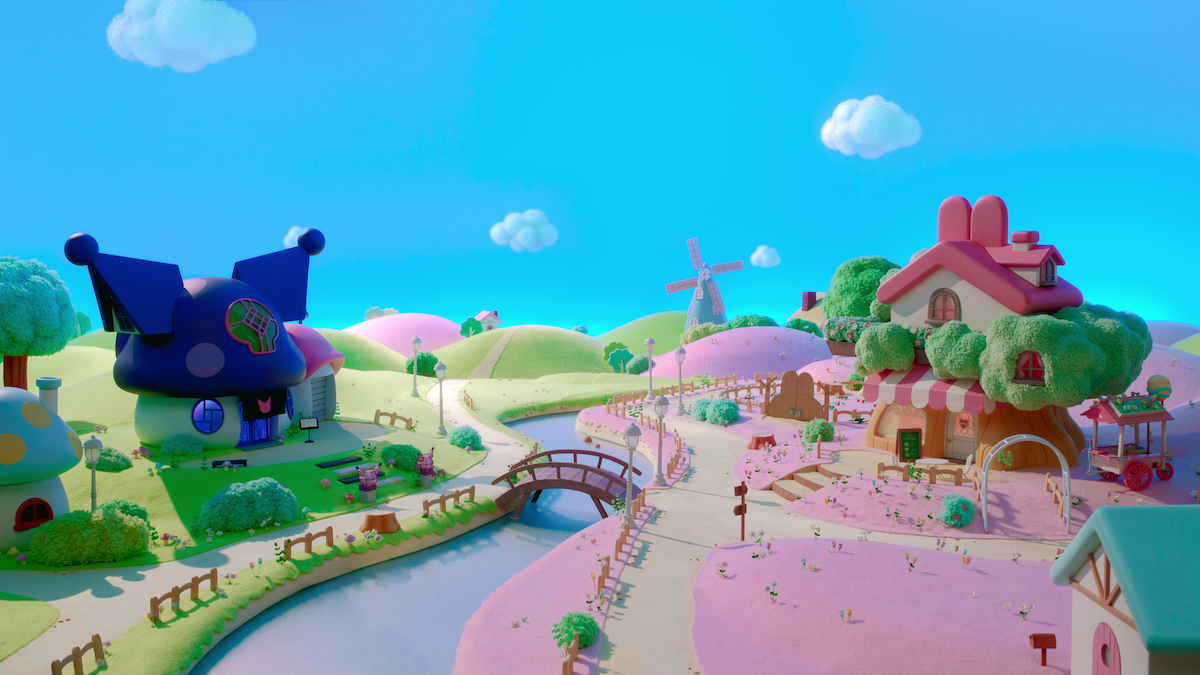
The plot admittedly is where the series can fall short. Moments where Kuromi and My Melody interact as friends or folly are where the series shine and the story is a good excuse for this, but as it gets more serious with a baking-themed antagonist introduced it begins to veer into something at odds with the more light-hearted tone that was established to that point without offering something as equally compelling in return. It’s not a dealbreaker, but this is a series that starts stronger than it ends, even if it never gets dull thanks to its brisk episodes. It even manages to tie in themes that will be appreciated by all audiences but should leave an impact on likely-younger audiences.
My Melody and Kuromi is not just a great series, it establishes Tomoki Misato as a premier director in Japanese stop motion for his tactile style that can bring life to anything. It proves Molcar wasn’t simply a chance viral moment but a moment in a career growing from strength to strength. Even if the plot doesn’t always work, it’s a fun time. If anything, I hope it leads to his new team to be given the reins to something more ambitious. He’s certainly earned it.
